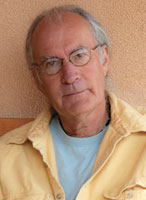Image-Processing Prerogatives
 When images are composed of codes and “addresses” they are open to all sorts of interpretations. Unlike film, where the image characteristics were, if you will, boiled into the emulsion, digital images are ultimately malleable and occasional capricious things. Major capture indiscretions aside, you can do what you please with an image. Want red balloons rather than blue? A few deft touches can change the entire party mood. Want your grass greener? Just slide that slider and you’ll have a lawn to make any suburbanite proud. Want to have zebras on the moon gamboling with unicorns in an idyllic wood? Gather the elements and composite them accordingly.
When images are composed of codes and “addresses” they are open to all sorts of interpretations. Unlike film, where the image characteristics were, if you will, boiled into the emulsion, digital images are ultimately malleable and occasional capricious things. Major capture indiscretions aside, you can do what you please with an image. Want red balloons rather than blue? A few deft touches can change the entire party mood. Want your grass greener? Just slide that slider and you’ll have a lawn to make any suburbanite proud. Want to have zebras on the moon gamboling with unicorns in an idyllic wood? Gather the elements and composite them accordingly.
In this issue we look at some of the perhaps more pragmatic programs and software applications that are of value to photographers. We’ve included hands-on reports on software programs that can be of great aid to the portrait photographer: one that speeds up and makes simple the often time-consuming retouching part of the presentation, and another that allows you to create and meld your own custom-made backdrops.
Another article covers a program that offers one-touch clearing up of often more mundane, but time-consuming, tasks in image work. In some instances, and for some photographers, this push-button approach might be all that’s needed, although others will find it a good first step so they can get on to more serious and personal interpretations of the image. And last but not least we tackle the often-tricky issue of calibration, where computer, monitor, and print learn to play nice together, with a review of a new pro software by David Brooks.
My feeling has always been that processing an image is where a photographer gets to put a personal touch and interpretation in an image, and that without processing you never get the utmost from your images. Perhaps this stems from my background as a darkroom techie, where it’s easily understood that the original capture—be it film or image file—is only the start of the photographer’s creative work.
Those who think that the “original” capture is somehow pure and should be untouched by digital hands later are under the illusion that the image hasn’t been crunched, wrestled, and wrangled even before it gets to their memory card. While in camera processing is pretty incredible and impressive, what you can do after is even more so, but in the latter case it’s your decisions, not the opinions of the camera maker, that calls the game. While the ability to shoot 300 images in a day without breaking a sweat is a common experience these days, editing down the take, and then polishing the gems you have gathered from the ore, is one of the true pleasures of being a photographer today.

- Log in or register to post comments

































